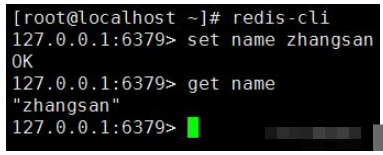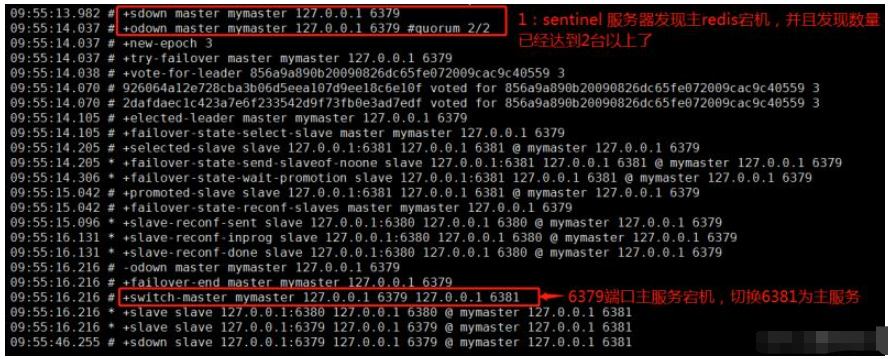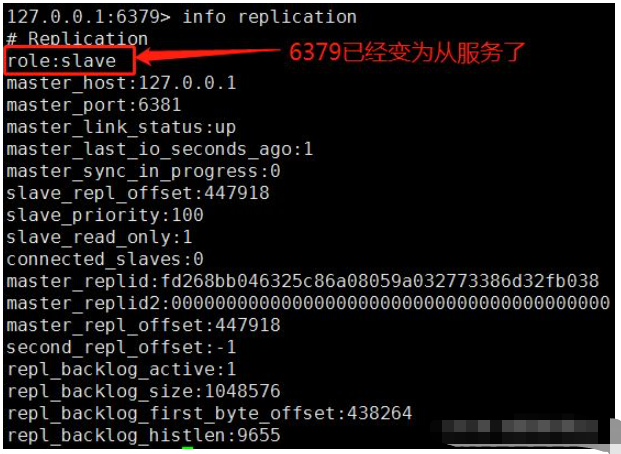 Database
Database
 Redis
Redis
 How to implement Redis stand-alone installation and sentinel mode cluster installation
How to implement Redis stand-alone installation and sentinel mode cluster installation
How to implement Redis stand-alone installation and sentinel mode cluster installation
1. Redis stand-alone version installation
1.1: Download the installation package
cd /usr/local/src/ wget https://download.redis.io/releases/redis-5.0.13.tar.gz
Seeing the redis-5.0.13.tar.gz file indicates that the download is successful
1.2: Decompress the installation package
tar -zxvf redis-5.0.13.tar.gz
After decompression is completed, enter the decompressed folder and you will see the following file content
cd redis-5.0.13 ll -rw-rw-r--. 1 root root 125833 Jul 22 02:07 00-RELEASENOTES -rw-rw-r--. 1 root root 53 Jul 22 02:07 BUGS -rw-rw-r--. 1 root root 2381 Jul 22 02:07 CONTRIBUTING -rw-rw-r--. 1 root root 1487 Jul 22 02:07 COPYING drwxrwxr-x. 6 root root 124 Jul 22 02:07 deps -rw-rw-r--. 1 root root 11 Jul 22 02:07 INSTALL -rw-rw-r--. 1 root root 151 Jul 22 02:07 Makefile -rw-rw-r--. 1 root root 6888 Jul 22 02:07 MANIFESTO -rw-rw-r--. 1 root root 20555 Jul 22 02:07 README.md -rw-rw-r--. 1 root root 63088 Jul 22 02:07 redis.conf -rwxrwxr-x. 1 root root 275 Jul 22 02:07 runtest -rwxrwxr-x. 1 root root 280 Jul 22 02:07 runtest-cluster -rwxrwxr-x. 1 root root 373 Jul 22 02:07 runtest-moduleapi -rwxrwxr-x. 1 root root 281 Jul 22 02:07 runtest-sentinel -rw-rw-r--. 1 root root 9710 Jul 22 02:07 sentinel.conf drwxrwxr-x. 3 root root 4096 Jul 22 02:07 src drwxrwxr-x. 11 root root 182 Jul 22 02:07 tests drwxrwxr-x. 8 root root 4096 Jul 22 02:07 utils
1.3: Execute the make command and compile the redis code
make
Generally, there will be some errors, don’t panic. Since redis is developed in C language, you must first confirm whether the gcc environment (gcc -v) is installed before installation. If it is not installed, execute the following command to install it yum install -y gcc

After the gcc environment is successfully installed, execute make distclean Clear the make records in between, and then re-make
1.4: Install and specify the installation directory
make install PREFIX=/usr/local/redis
1.5: Configure environment variables
vi /etc/profile #在最后面加上以下内容 export REDIS_HOME=/usr/local/redis export PATH=$PATH:$REDIS_HOME/bin #使环境变量生效 source /etc/profile
1.6: Let redis start as a service in the background
1.6.1: Copy redis.conf from the redis source code directory to the redis installation directory
cp /usr/local/src/redis-5.0.13/redis.conf /usr/local/redis/bin/
1.6.2: Modify the redis.conf file, change daemonize no to daemonize yes, and start redis as a daemon thread
cd /usr/local/redis/bin/ vi redis.conf

1.6.3: Start in the background and connect to redis for testing. Execute the command to start redis
redis-server /usr/local/redis/bin/redis.conf
Then execute redis-cli to connect to redis, and then set get data test

At this point, the stand-alone version of redis has been installed successfully! ! !
1.7: redis shutdown service
redis-cli shutdown
2. Redis cluster version installation
Instructions for the redis cluster version in this article use the master-slave replication cluster version installation
2.1: The basic cluster topology is as follows

2.2: Modify the redis-sentinel configuration file sentinel.conf
#sentinel-1 配置文件修改内容 port 26379 sentinel monitor mymaster 192.168.33.100 6379 2 #sentinel-2 配置文件修改内容 port 26380 sentinel monitor mymaster 192.168.33.100 6379 2 #sentinel-3 配置文件修改内容 port 26380 sentinel monitor mymaster 192.168.33.100 6379 2
sentinel monitor
2.3: Modify the redis-server configuration file redis.conf
# redis-1 的 redis.conf配置 port 6379 # redis-2 的 redis.conf配置 port 6380 replicaof 127.0.0.1 6379 # redis-3 的 redis.conf配置 port 6381 replicaof 127.0.0.1 6379
2.4: Start the redis-1, redis-2, redis-3 services respectively
2.5: Respectively Start sentinel-1, sentinel-2, sentinel-3
cd /usr/local/redis/bin redis-sentinel sentinel.conf
2.6: Verify the cluster effect
2.6.1: Connect to the main redis service, check the cluster status, you can see the current redis is the master, and the other two redis services are slave
redis-cli -h 192.168.33.100 -p 6379 info replication #得到以下内容 role:master connected_slaves:2 slave0:ip=192.168.33.101,port=6380,state=online,offset=246573,lag=1 slave1:ip=192.168.33.102,port=6381,state=online,offset=246706,lag=0 master_replid:bc4a9331019d765fe16199fcdcb357b4681a9f75 master_replid2:b41587d209ec96c2b2c634c1880fed7b12ded6e8 master_repl_offset:246839 second_repl_offset:221755 repl_backlog_active:1 repl_backlog_size:1048576 repl_backlog_first_byte_offset:9553 repl_backlog_histlen:237287
2.6.2: Stop the redis main service
redis-cli -h 192.168.33.100 -p 6379 shutdown
2.6.3: Check the log of the sentinel service, you can see that the redis main service is down , the sentinel service actively switches 6381 to the main redis service

2.6.4: Start the 6379 port redis service again to check the cluster status. You can see that 6379 has become a slave service.

The above is the detailed content of How to implement Redis stand-alone installation and sentinel mode cluster installation. For more information, please follow other related articles on the PHP Chinese website!

Hot AI Tools

Undress AI Tool
Undress images for free

Undresser.AI Undress
AI-powered app for creating realistic nude photos

AI Clothes Remover
Online AI tool for removing clothes from photos.

Clothoff.io
AI clothes remover

Video Face Swap
Swap faces in any video effortlessly with our completely free AI face swap tool!

Hot Article

Hot Tools

Notepad++7.3.1
Easy-to-use and free code editor

SublimeText3 Chinese version
Chinese version, very easy to use

Zend Studio 13.0.1
Powerful PHP integrated development environment

Dreamweaver CS6
Visual web development tools

SublimeText3 Mac version
God-level code editing software (SublimeText3)
 Redis: A Comparison to Traditional Database Servers
May 07, 2025 am 12:09 AM
Redis: A Comparison to Traditional Database Servers
May 07, 2025 am 12:09 AM
Redis is superior to traditional databases in high concurrency and low latency scenarios, but is not suitable for complex queries and transaction processing. 1.Redis uses memory storage, fast read and write speed, suitable for high concurrency and low latency requirements. 2. Traditional databases are based on disk, support complex queries and transaction processing, and have strong data consistency and persistence. 3. Redis is suitable as a supplement or substitute for traditional databases, but it needs to be selected according to specific business needs.
 How to limit user resources in Linux? How to configure ulimit?
May 29, 2025 pm 11:09 PM
How to limit user resources in Linux? How to configure ulimit?
May 29, 2025 pm 11:09 PM
Linux system restricts user resources through the ulimit command to prevent excessive use of resources. 1.ulimit is a built-in shell command that can limit the number of file descriptors (-n), memory size (-v), thread count (-u), etc., which are divided into soft limit (current effective value) and hard limit (maximum upper limit). 2. Use the ulimit command directly for temporary modification, such as ulimit-n2048, but it is only valid for the current session. 3. For permanent effect, you need to modify /etc/security/limits.conf and PAM configuration files, and add sessionrequiredpam_limits.so. 4. The systemd service needs to set Lim in the unit file
 Is Redis Primarily a Database?
May 05, 2025 am 12:07 AM
Is Redis Primarily a Database?
May 05, 2025 am 12:07 AM
Redis is primarily a database, but it is more than just a database. 1. As a database, Redis supports persistence and is suitable for high-performance needs. 2. As a cache, Redis improves application response speed. 3. As a message broker, Redis supports publish-subscribe mode, suitable for real-time communication.
 Steps and examples for building a dynamic PHP website with PhpStudy
May 16, 2025 pm 07:54 PM
Steps and examples for building a dynamic PHP website with PhpStudy
May 16, 2025 pm 07:54 PM
The steps to build a dynamic PHP website using PhpStudy include: 1. Install PhpStudy and start the service; 2. Configure the website root directory and database connection; 3. Write PHP scripts to generate dynamic content; 4. Debug and optimize website performance. Through these steps, you can build a fully functional dynamic PHP website from scratch.
 Redis: Beyond SQL - The NoSQL Perspective
May 08, 2025 am 12:25 AM
Redis: Beyond SQL - The NoSQL Perspective
May 08, 2025 am 12:25 AM
Redis goes beyond SQL databases because of its high performance and flexibility. 1) Redis achieves extremely fast read and write speed through memory storage. 2) It supports a variety of data structures, such as lists and collections, suitable for complex data processing. 3) Single-threaded model simplifies development, but high concurrency may become a bottleneck.
 Redis: Unveiling Its Purpose and Key Applications
May 03, 2025 am 12:11 AM
Redis: Unveiling Its Purpose and Key Applications
May 03, 2025 am 12:11 AM
Redisisanopen-source,in-memorydatastructurestoreusedasadatabase,cache,andmessagebroker,excellinginspeedandversatility.Itiswidelyusedforcaching,real-timeanalytics,sessionmanagement,andleaderboardsduetoitssupportforvariousdatastructuresandfastdataacces
 Laravel Page Cache Policy
May 29, 2025 pm 09:15 PM
Laravel Page Cache Policy
May 29, 2025 pm 09:15 PM
Laravel's page caching strategy can significantly improve website performance. 1) Use cache helper functions to implement page caching, such as the Cache::remember method. 2) Select the appropriate cache backend, such as Redis. 3) Pay attention to data consistency issues, and you can use fine-grained caches or event listeners to clear the cache. 4) Further optimization is combined with routing cache, view cache and cache tags. By rationally applying these strategies, website performance can be effectively improved.
 When Should I Use Redis Instead of a Traditional Database?
May 13, 2025 pm 04:01 PM
When Should I Use Redis Instead of a Traditional Database?
May 13, 2025 pm 04:01 PM
UseRedisinsteadofatraditionaldatabasewhenyourapplicationrequiresspeedandreal-timedataprocessing,suchasforcaching,sessionmanagement,orreal-timeanalytics.Redisexcelsin:1)Caching,reducingloadonprimarydatabases;2)Sessionmanagement,simplifyingdatahandling






